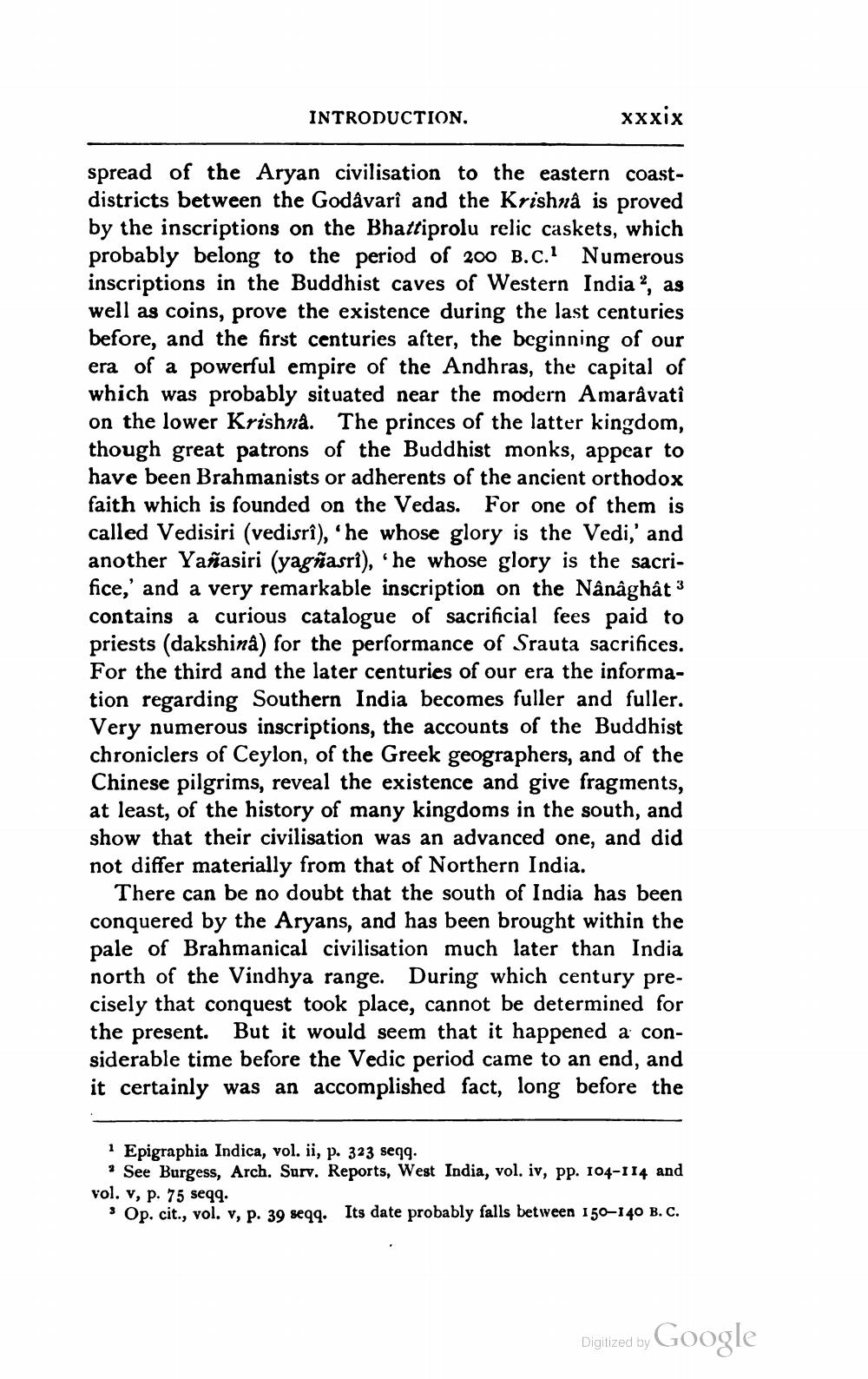________________
INTRODUCTION.
xxxix
spread of the Aryan civilisation to the eastern coastdistricts between the Godavarî and the Krishna is proved by the inscriptions on the Bhattiprolu relic caskets, which probably belong to the period of 200 B.C.1 Numerous inscriptions in the Buddhist caves of Western India?, as well as coins, prove the existence during the last centuries before, and the first centuries after, the beginning of our era of a powerful empire of the Andhras, the capital of which was probably situated near the modern Amaravati on the lower Krishna. The princes of the latter kingdom, though great patrons of the Buddhist monks, appear to have been Brahmanists or adherents of the ancient orthodox faith which is founded on the Vedas. For one of them is called Vedisiri (vedisrî), he whose glory is the Vedi,' and another Yañasiri (yagñasri), 'he whose glory is the sacrifice,' and a very remarkable inscription on the Nânâghất 3 contains a curious catalogue of sacrificial fees paid to priests (dakshina) for the performance of Srauta sacrifices. For the third and the later centuries of our era the information regarding Southern India becomes fuller and fuller. Very numerous inscriptions, the accounts of the Buddhist chroniclers of Ceylon, of the Greek geographers, and of the Chinese pilgrims, reveal the existence and give fragments, at least, of the history of many kingdoms in the south, and show that their civilisation was an advanced one, and did not differ materially from that of Northern India.
There can be no doubt that the south of India has been conquered by the Aryans, and has been brought within the pale of Brahmanical civilisation much later than India north of the Vindhya range. During which century precisely that conquest took place, cannot be determined for the present. But it would seem that it happened a considerable time before the Vedic period came to an end, and it certainly was an accomplished fact, long before the
1 Epigraphia Indica, vol. ii, p. 323 seqq.
• See Burgess, Arch. Surv. Reports, West India, vol. iv, pp. 104-114 and vol. v, p. 75 seqq.
* Op. cit., vol. v, p. 39 seqq. Its date probably falls between 150-140 B.C.
Digitized by Google




